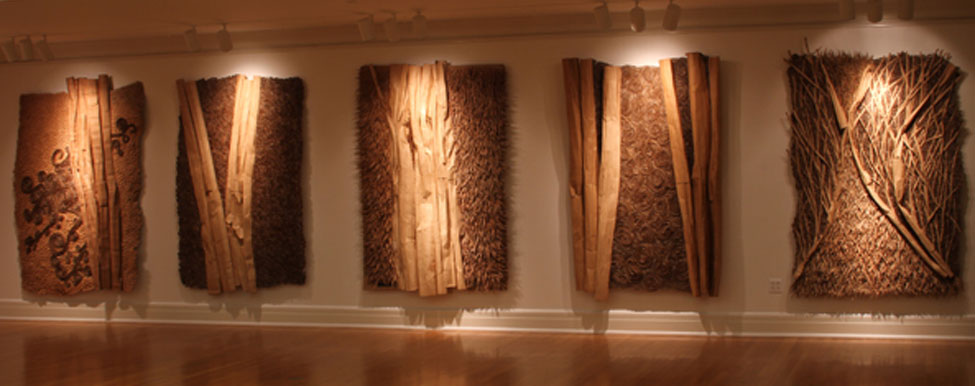Henry Klimowicz
After listening to Henry Klimowicz discribe his art, one looks at cardboard in an entirely new way. Cardboard, you see, is Klimowicz’s material of choice. With it he creates fascinating, sometimes illusionary pieces of art that challenge the viewer to enter his world.
Klimowicz grew up in Milwaukee, graduated from the University of Wisconsin with a Bachelor in Fine Arts degree and earned his MFA from Tyler School of Art in Philadelphia.
“My mother was very creative, so growing up we always had art supplies around the house. Finger painting was one of my first ventures into the world of art,” Klimowicz said. Some of his early work dealt with natural history dioramas, influenced by what he saw on trips to the museum with his grandparents.
Klimowicz eventually wound up in New York City where he worked for the Guggenheim Museum, handling art installations and creating exhibits. He continues that trade now in Connecticut for private clients.
So, when did the idea of incorporating cardboard into his art first occur to him?
“For a time, I was making things like dioramas using lots of different materials. I got to a point where I was disillusioned and thought I was making things that relied too much on the materials to tell the stories,” Klimowicz explained. “I wanted to be the sole author of my illusions.”
While living in Brooklyn and riding the subway, he started drawing pictures of his fellow passengers. He would then recreate them on cardboard, which produced a long series of work that was both figurative and illusionary. The pieces were varied in size and included large, three-dimensional works that reflected his interest in nature.
When Klimowicz made the move from Brooklyn to Millerton he became the caregiver for his daughter and put his art career on hold for about ten years. Fortunately he returned to his passion and made the decision to keep using cardboard as his primary medium.
“At the same time, “Klimowicz said, “I abandoned figurative elements in my work and have created exclusively three-dimensional abstract pieces since then. It isn’t the material that gives something to the viewer; it is what I put into it – my vision creates whatever image the viewer takes away from the piece.”
Although the artist uses recycled cardboard, he is selective about its sources.
“I use only single-ply cardboard,” he said, “because it’s not puffy. Some of it comes locally from Herrington’s Hardware and Irving Farm coffee roasters. I will use cardboard that is used to wrap the paintings that I handle for clients. I don’t want to be dependent on any one source.”
In addition to showing his own work, Klimowicz has for the past three years operated the Re-Institute out of his barn where he exhibits fellow artists and invites viewers to tour his own studio on the property.
While the artist is not one to look back, Klimowicz keeps a lot of his work on the walls of his working space and sometimes finds a new inspiration in an older piece.
“I can look at a piece from three years ago and decide to do another piece that moves it along to a whole other dimension. If a theme is a good one, you follow it as far as you can. I always feel that each piece can be a stepping stone to another, so the idea is never finished.”
Thanks to Klimowicz’s originality, cardboard takes on a whole new meaning and transcends its humble origins. And for those who want to view his recent work, he will have a new exhibition at the Moviehouse Gallery in Millerton.
“Speaking to Nature: The Sculpture of Henry Klimowicz” opens on April 11th with a reception at the Moviehouse and runs through July 9th. For further information visit www.themoviehouse.net.

